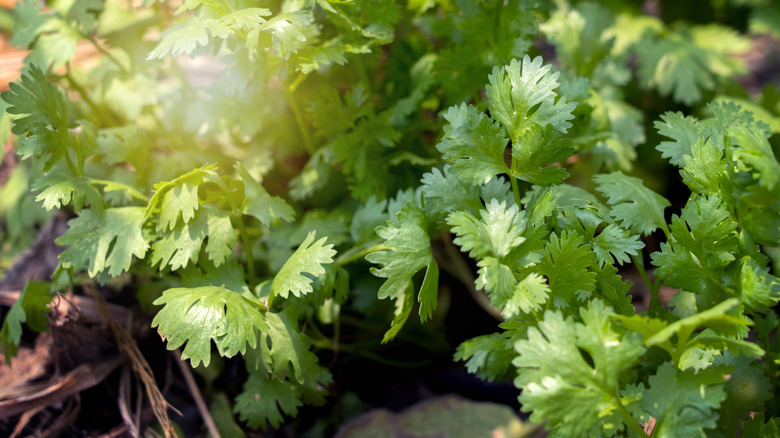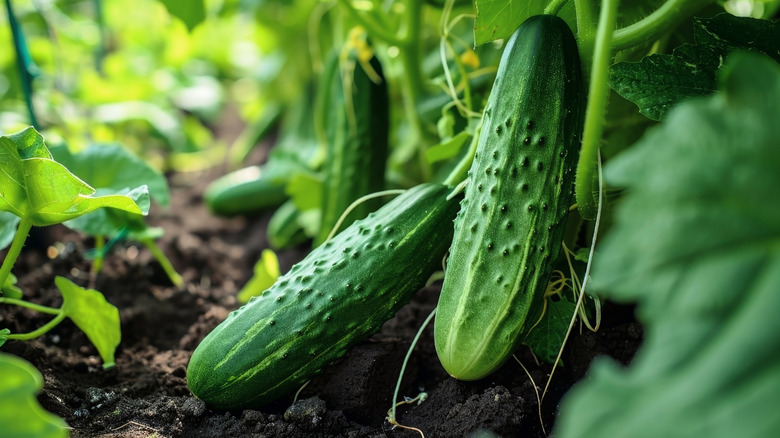Are Cucumbers And Cilantro Companion Plants? Here's The Truth
Cilantro is a tasty, aromatic herb that pairs well with a variety of flavors, but how it pairs with other plants for taste is different from how it pairs for growth. There are plenty of companion plants that will thrive next to cilantro, but are cucumbers one of them?
Yes and no. There are plenty of functional benefits to companion planting cilantro (Coriandrum sativum) and cucumber (Cucumis sativus), but there are also drawbacks and logistical considerations to take into account. Cilantro and cucumber have similar soil needs, each preferring well-draining, slightly acidic-to-neutral soil with a pH range of 6.0 to 7.0. They also both like to stay moist, though cilantro prefers to stay a bit drier than cucumbers, and have slightly differing sunlight preferences: cilantro does best in partial shade, while cucumbers thrive in full sunlight.
That sunlight requirement is one way the two plants can either help or hurt each other; some varieties of cucumber are vining, so if they grow on a trellis and provide shade for the cilantro, it benefits both plants. But if your cilantro gets too much sun and grows too tall, it can shade the cucumbers and stunt their growth. This can be avoided with proper plant spacing. Generally, cilantro seeds should be 6 to 8 inches apart in rows that are 12 inches apart, and cucumbers should be planted in hills or mounds that are 36 to 60 inches apart to allow for vine spreading.
Pros and cons of companion planting cucumbers and cilantro
Companion planting cucumbers and cilantro has advantages and disadvantages. One reason people may consider cucumbers a vegetable to avoid growing near cilantro is how cilantro can affect the taste. Cucumbers are 95% water, which means it's easier for aromatic herbs growing nearby to affect their flavor – some gardeners report cilantro causing their cucumbers' flavor to be a bit off. While cilantro's scent can be a negative for taste, it can also be a positive for pest control; it repels cucumber pests, like spider mites and aphids, while also attracting beneficial pollinators like bees and pest predators like ladybugs, which can also keep cucumber beetles out of your garden. More pollination and fewer pests mean a better yield for both crops.
Another way cilantro and cucumber's differences can be turned into mutual benefit is through their varying nutrient requirements. They are both moderate to heavy feeders with shallow root systems, which could lead them to compete for nutrients and water. But because the nutrients the plants prefer aren't the same, they can help each other — cucumbers prefer more phosphorus and potassium than nitrogen, and cilantro can deplete excess nitrogen in the soil to keep nutrients balanced. And since cucumbers still feed on some of the nitrogen, cilantro is at less risk of over-fertilization, which would make it less flavorful. All in all, it takes some thoughtful planting, but cilantro and cucumbers can help each other thrive if the right conditions are present.

